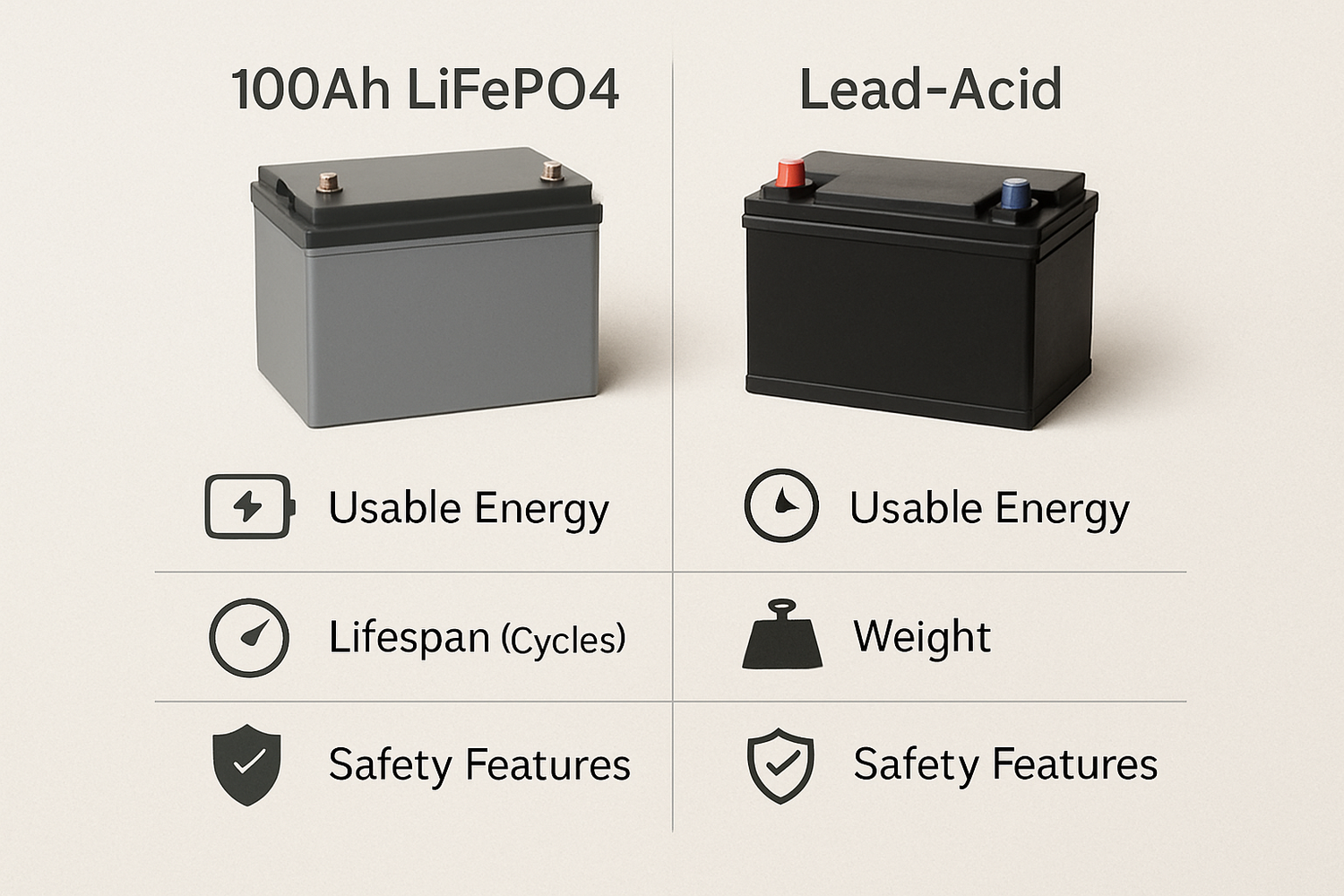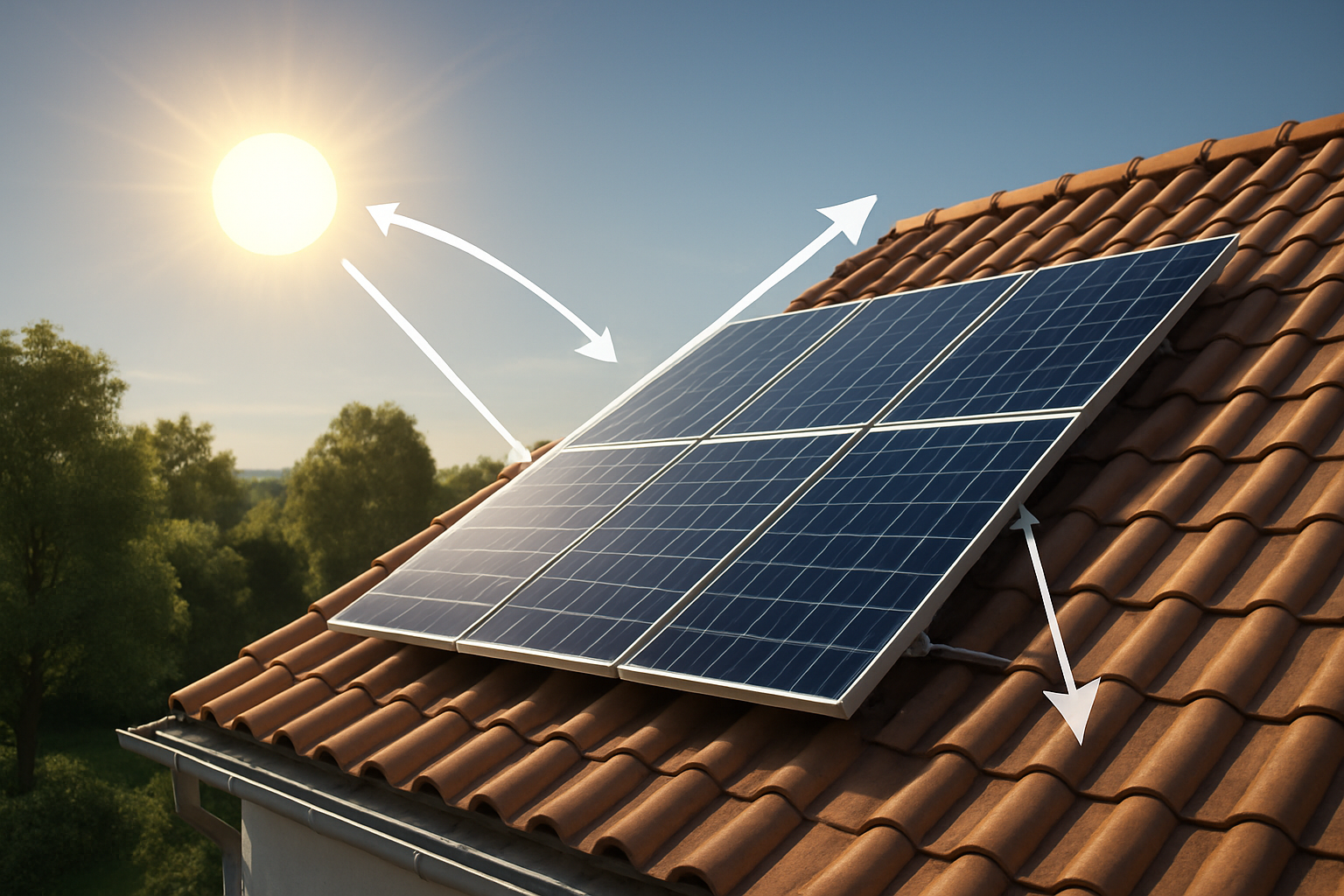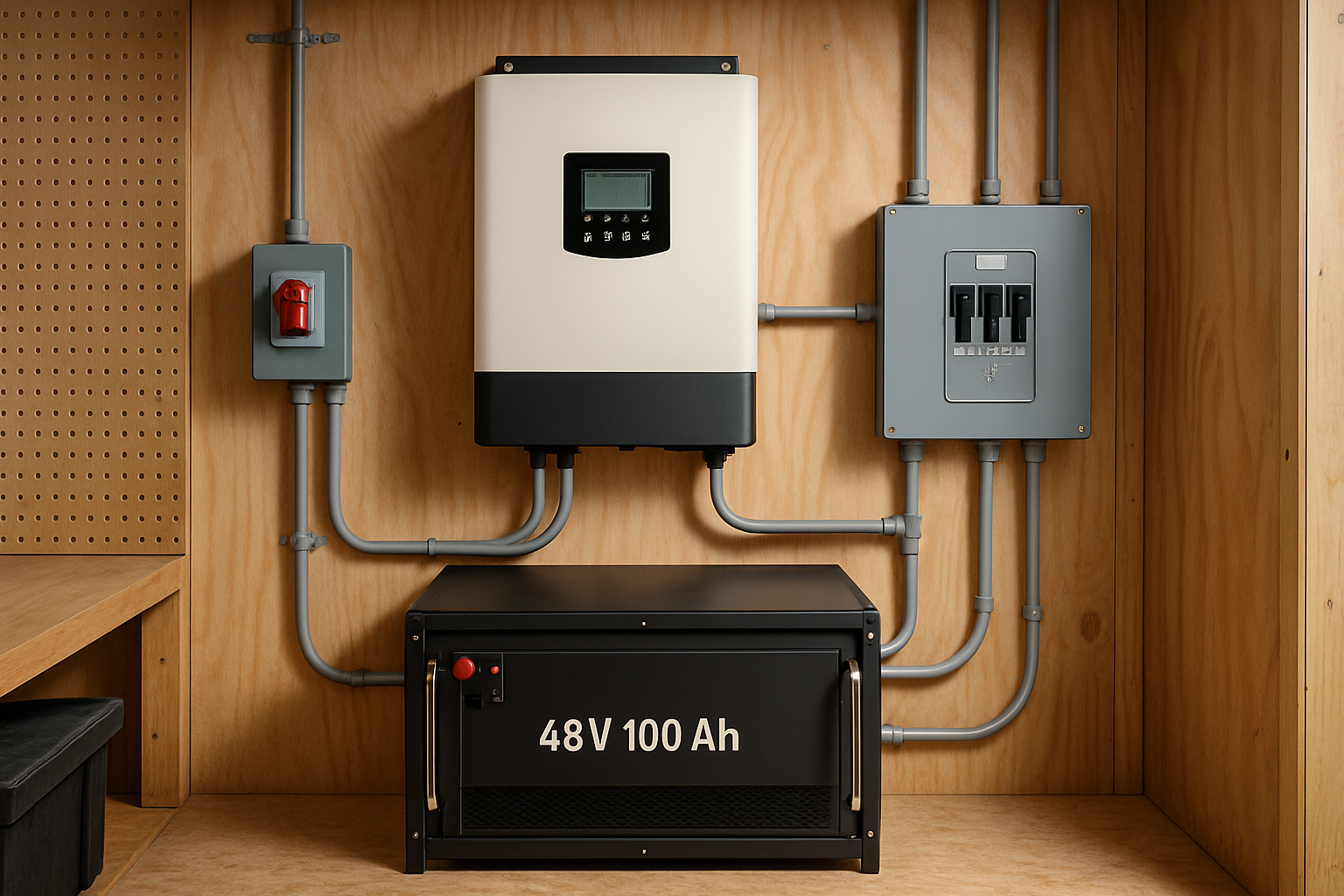The dream of an off-grid cabin often involves serene landscapes and a quiet escape. Central to this vision is a reliable and independent power source. A 100Ah lithium battery has become a popular foundation for many small off-grid solar systems, but is it enough for your cabin? The answer depends entirely on your specific energy needs and system design. This text breaks down the capacity of a 100Ah battery, how to calculate your cabin's power requirements, and what a complete system looks like.
Understanding the Capacity of a 100Ah Lithium Battery
Before determining if a 100Ah battery is suitable, it's crucial to know what its rating truly represents in terms of usable energy. The specifications provide a clear picture of its potential.
What Does 100Ah Actually Mean?
Ampere-hours (Ah) measure electric charge, indicating a battery can supply 100 amps for one hour, or 1 amp for 100 hours. To find the total energy stored, you convert this to Watt-hours (Wh). For a typical 12V LiFePO4 (Lithium Iron Phosphate) battery, the nominal voltage is around 12.8V. The calculation is:
100Ah × 12.8V = 1280Wh or 1.28 kWh
This 1280Wh is the total energy the battery can hold. Critically, lithium batteries offer a high Depth of Discharge (DoD), often up to 90-100%, meaning you can use almost all of this stored energy without damaging the battery. This is a significant advantage over traditional lead-acid batteries, which should only be discharged to about 50%.
LiFePO4 vs. Other Chemistries: Why It Matters
For an off-grid cabin, the type of battery chemistry is paramount. LiFePO4 batteries are the standard for stationary energy storage for several reasons. They are known for their exceptional safety, thermal stability, and long cycle life, often exceeding 4000 charge-discharge cycles. This longevity and reliability make them a sound choice for a system you depend on. Their efficiency means more of the solar energy you generate gets stored and is available for use.
The Practical Energy You Can Expect
Considering a conservative 90% DoD for a LiFePO4 battery, the usable energy from a 100Ah unit is approximately 1152Wh (1280Wh * 0.90). This is the figure you should use when calculating what appliances you can run and for how long. It represents the real-world power available to your cabin.
Calculating Your Cabin's Daily Energy Consumption
The most critical step in sizing your power system is accurately determining your daily electricity usage. A single 100Ah battery might be perfect for a minimalist setup but insufficient for a cabin with modern amenities.
Conducting an Energy Audit: Your First Step
An energy audit involves listing every electrical device you plan to use, its power consumption in Watts, and the number of hours you'll use it each day. You can find the wattage on the appliance's label. Multiply the watts by the hours of use to get the daily Watt-hours (Wh) for each device.
A Sample Cabin Energy Needs Calculation
To illustrate, here is a breakdown for a modest weekend cabin. This kind of detailed calculation helps avoid underestimating your power needs.
| Appliance | Quantity | Power (Watts) | Hours of Use/Day | Total Energy (Wh/Day) |
|---|---|---|---|---|
| LED Lights | 4 | 5W | 5 | 100 |
| Phone/Tablet Charger | 2 | 15W | 2 | 60 |
| Efficient DC Refrigerator | 1 | 45W (runs ~8 hrs/day) | 8 | 360 |
| Water Pump | 1 | 60W | 0.5 | 30 |
| Total Daily Consumption | 550Wh |
In this scenario, the 550Wh daily need is well within the 1152Wh usable capacity of a 100Ah lithium battery, leaving a healthy buffer.
Factors That Increase Your Power Demand
Your energy needs can fluctuate. Colder, shorter days in winter mean more reliance on lighting. High-draw appliances like coffee makers, microwaves, or power tools consume significant energy and can quickly deplete a small battery bank. It is important to use energy-efficient appliances to minimize unnecessary drain.
Designing a System Around a 100Ah Lithium Battery
A battery is just one part of a complete off-grid solar system. To function, it needs solar panels to generate power and other components to manage it.
Sizing Your Solar Array to Match the Battery
Your solar panels must be able to fully recharge your battery while also powering any daytime loads. To calculate the minimum solar array size, divide your daily energy consumption by the number of peak sun hours your location receives. You can find this data from resources like the PVWatts Calculator from the National Renewable Energy Laboratory. For our 550Wh example with 4 peak sun hours:
550Wh / 4 hours = 137.5W
It is always recommended to oversize your solar array to account for cloudy days and system inefficiencies. A 200W to 300W panel would be a more resilient choice for a 100Ah battery.
The Role of Inverters and Charge Controllers
An off-grid system requires two other key components. A solar charge controller regulates the power from the panels to prevent overcharging the battery. An inverter converts the DC power stored in the battery to AC power for running standard household appliances. Selecting high-quality components ensures the safety and efficiency of your entire setup.
Scaling Up: When One Battery Isn't Enough
If your energy audit reveals needs greater than what one 100Ah battery can supply, the solution is to expand your battery bank. You can connect multiple 100Ah batteries in parallel to increase your total storage capacity. For example, two batteries would provide 200Ah (approximately 2.3kWh of usable energy). As detailed in analyses on solar storage performance metrics, matching your battery bank size to your inverter and solar array is key to optimizing system efficiency and longevity.
A Final Perspective on Your Cabin's Power
A 100Ah lithium battery can certainly power an off-grid cabin, but it is best suited for modest energy users. It is an excellent choice for weekend retreats or for those committed to a minimalist lifestyle with energy-efficient appliances. For full-time living or those who need to run multiple high-power devices, a larger battery bank is necessary.
The key to success is a thorough energy audit and thoughtful system design. By carefully calculating your needs and investing in compatible components, you can build a reliable power system that supports your off-grid independence. According to the International Energy Agency, solar PV is a leading technology in the global energy transition, and its scalability makes it ideal for applications ranging from large power plants to individual cabins.
Disclaimer: This article is for informational purposes only. It is not intended as professional electrical or financial advice. Please consult with a qualified solar installer for system design and installation.
Frequently Asked Questions
How long will a 100Ah lithium battery last?
The runtime depends on the load. A 1280Wh battery could power a 100W device for approximately 12.8 hours (1280Wh / 100W). In terms of lifespan, a high-quality LiFePO4 battery can last for over 4,000 charge-discharge cycles, which translates to many years of reliable service.
Can I use a 100Ah battery for a refrigerator?
Yes, but it should be a highly efficient DC model or an ENERGY STAR certified appliance. A small, efficient fridge might consume 300-500Wh per day, which a single 100Ah battery can support, provided the solar array is large enough to replenish this energy daily.
What size solar panel do I need to charge a 100Ah battery?
To charge a 100Ah (1280Wh) battery in a single day with 5 peak sun hours, you would need at least 256W of solar panels (1280Wh / 5h). To ensure a full charge even on less sunny days, a 300W to 400W solar array is a practical recommendation.
Is it possible to expand my system later?
Absolutely. One of the benefits of a modular solar system is its scalability. You can add more 100Ah lithium batteries in parallel to increase your energy storage capacity. Just ensure that the batteries are of the same model and age, and that your charge controller and inverter can handle the additional power.





Leave a comment
All comments are moderated before being published.
This site is protected by hCaptcha and the hCaptcha Privacy Policy and Terms of Service apply.